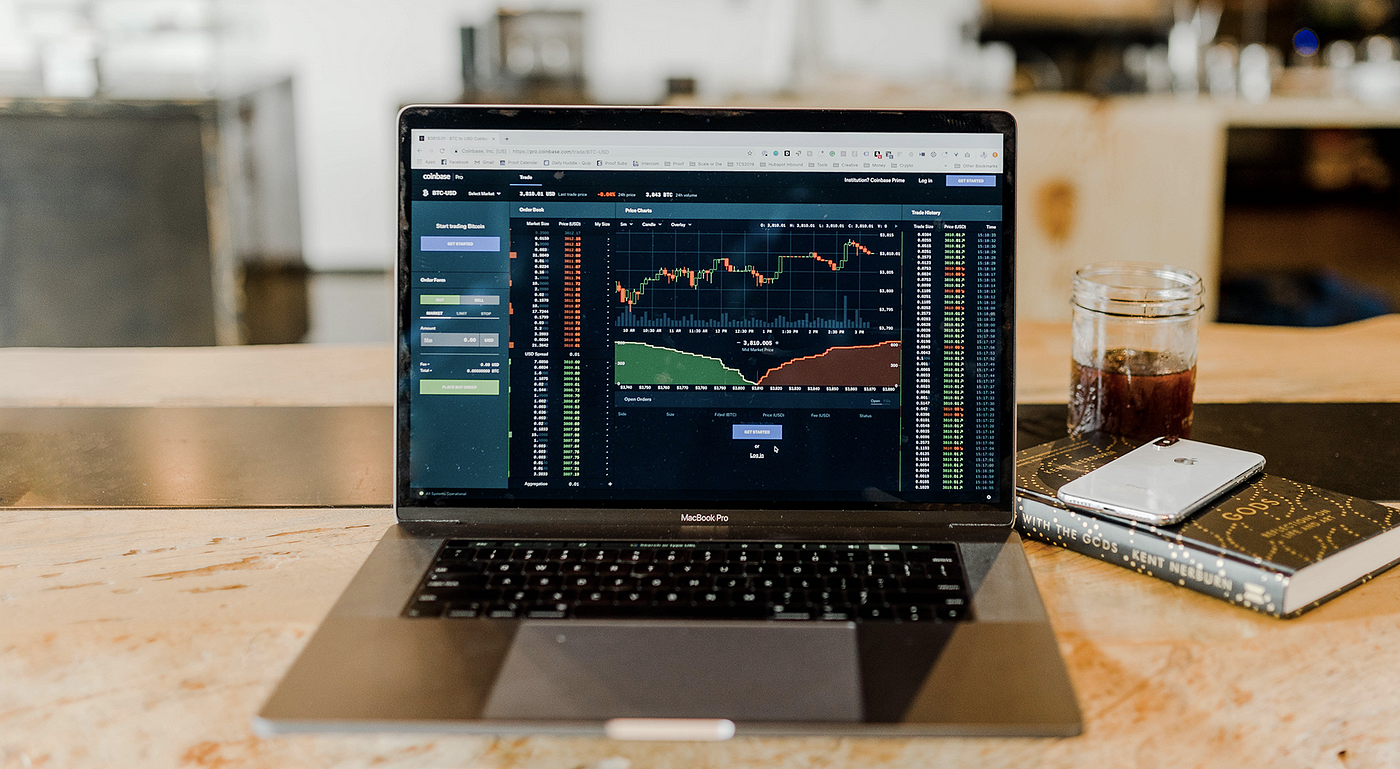Future contracts and how risky are they

Future contracts and how risky are they
Derivatives are contracts whose value is determined by the underlying asset. These are often used to speculate and profit. Some people use them to shift Risk. The following topics are covered in this article:
What are derivatives?
Financial derivatives are contracts based on the value of an underlying asset or group of Assets. Stocks, bonds, currencies, commodities, and market indexes are common Assets. The underlying Assets’ value fluctuates in response to market conditions. Entering into derivative contracts is based on the idea of making money by speculating on the value of the underlying asset in the future.
Consider the chances that the market price of an equity share may rise or fall. A decrease in the value of your stock probably results in a loss. In this case, you can enter a derivative contract to generate money by putting an appropriate bet. Alternatively, you protect yourself from losses in the spot market where the stock is traded.
Why do investors engage in derivatives trading?
Aside from profit, there are several ad-don reasons why derivative contracts are used. The following are a few of them:
Arbitrage advantage: Buying a commodity or investment at a low price in one market and selling it at a high price in another market is known by the term arbitrage trading. You gain from the differential in commodity prices between the two marketplaces in this way.
Market volatility protection: If the price of an asset fluctuates, your chances of losing money rise. You may use the derivatives market to find products that will help you protect yourself against a drop in the price of the equities you hold. In the incident of equities that you want to gain, you may buy goods to protect against a price increase.
Some people use derivatives to shift Risk and park their surplus cash
Others, on the other hand, use it to speculate and profit. You may profit from price swings without selling the underlying shares.
Who is involved in the derivatives market?
Each type of person will have an aim in mind when participating in the derivatives market. Based on their trade motivations, you may categorize them into the following groups:
Hedgers are stock market traders that are Risk cautious. They use derivatives to protect their investment portfolio from market risk and price fluctuations. They achieve this by taking the opposing side of the derivatives market. They pass the Risk of loss to those willing to accept it in this way. They must pay a premium to the risk-taker in return for the available hedging. Assume you own 100 shares of X.Y.Z. Corporation, which is now trading at Rs. 120 each. After three months, you want to sell these shares. However, you don’t want to lose money if the market price drops.
At the same time, you don’t want to miss out on a future profit opportunity by selling them for more. You may buy a put option for a little premium in this incident, which will satisfy both conditions.
Speculators: The derivative market’s risk-takers. To make money, they want to take risks. In comparison to the hedgers, they have a whole diverse viewpoint. If the bets turn out to be accurate, this difference of opinion allows them to earn handsomely. In the scenario above, you bought a put option to protect yourself from a drop in stock prices. The speculator, your counterparty, will bet that the stock price will not drop. If the situation requires it,
The speculator, your counterparty, will bet that the stock price will not decline. You will not carry out your put option if the stock prices do not fall. As a result, the speculator maintains the premium and profits.
/GettyImages-1185273847-4f962b5a1ad24d6eb5cc9f55069dbdfb.jpg)
Traders on the margin: The minimum amount you must deposit with the broker to participate in the derivative market is stated by the term a margin. It is used to show that your daily losses and profits result from market fluctuations. It allows you to get leverage in derivative transactions while maintaining a prominent open position. Assume you spend Rs. 2 lakh on the stock market to purchase 200 shares of A.B.C. Ltd., each worth Rs. 1000.
However, you may possess a three-fold larger stake in the derivative market with the same investment, i.e., Rs 6 lakh. In the derivative market, a little price shift will result in more considerable gains/losses than in the stock market.
Arbitrageurs profit from market defects since they are low-risk. They gain low-cost securities in one market and sell them at a higher price in another market at the same time. This happens only when the same asset is provided at several prices in different marketplaces. Assume an equity share is traded in the stock market for Rs 1000 and the futures market for Rs 105.
In the stock market, an arbitrageur would purchase the stock at Rs 1000 and sell it at Rs 1050 in the futures market. He/she makes a low-risk profit of Rs 50 being a result of this technique.
What Are Derivative Contracts, And What Are Their Different Types?
Options, forwards, futures, and swaps are the four main forms of derivative contracts.
Options are derivative contracts that provide the buyer the right to purchase or sell the underlying asset at a defined price under a specific time period. The buyer is not obligated to carry out his or her option. The option writer is the person who sells the options. The special price is the price that is stated. Before the option period expires, you can exercise American options at any moment. European options, on the other hand, may only be exercised on the expiration date.
Futures are standardized contracts that allow the holder to purchase or sell an asset at a predetermined price on a specific date. The parties to a futures contract are obligated to fulfill their liabilities. The Stock Exchange is where these contracts are exchanged. Every day, the value of future contracts is marked to market. It indicates that until the contract’s expiration date, the contract’s value is changed in accordance with market changes.
Forwards: Forwards are similar to futures contracts in that the holder is obligated to fulfill the contract’s terms. Forwards, on the other hand, are not standardized and are not traded on Stock Exchanges. These are not marked-to-market and are sold over-the-counter. These can be customized to meet the needs of the contracting parties.
Swaps are financial derivative transactions in which two parties trade Financial commitments. The Cash flows are based on a notional principal Amount agreed upon by both parties, with no actual principal returned. A rate of interest determines the number of Cash flows. One cash flow usually is constant, while the other fluctuates based on a benchmark interest Rate. The most frequent type of swap is an interest Rate swap. Swaps are over-the-counter arrangements between corporations or financial companies that are not traded on Stock Exchanges.
What Is The Best Way To Trade In The Derivatives Market?
Before you can trade derivatives, you must first grasp how they work. The strategies used in derivatives are not the same like those used in the stock market.
Before you may trade on the derivative market, you must first deposit a margin amount. Until the deal is resolved, the margin money cannot be withdrawn. Furthermore, if the quantity goes below the minimum, you must replace it.
You should have an active trading Account that allows you to trade derivatives. You may make orders online or over the phone if you use the services of a broker.
You must evaluate elements like cash on hand, margin requirements, the contract price, and the price of the underlying shares when choosing stocks. Make sure everything is in line with your budget.
To settle the deal, you probably choose to stay invested until the expiration date. In this Case, you have two options: pay the whole amount owed or engage in a counter-trade.
Futures contracts are derivatives securities, which may be confusing and scary. If you feel that futures and other derivatives increase market volatility and are responsible for financial instability in the markets or the higher economy, you are not alone.
Derivatives have been blamed for the 2008 financial meltdown, but do they deserve such a heavy punishment? Most probably not. Instead, we must learn about them, including how they are exchanged, their benefits and drawbacks, and how they differ from one another.
Derivatives exist in a variety of forms and sizes, with some being more hazy and complicated than others. Here, we’ll evaluate futures contracts, which allow the holder to take possession of an item in the future for a price paid now. These contracts are exchanged on a return and are heavily regulated, making them one of the most benign and extensively used derivatives contracts.
Futures Contracts
Futures are contracts in which the value is derived from an underlying asset, like a usual stock, bond, or stock index. Futures contracts are standardized contracts that are exchanged on a central Exchange. They are agreements between two parties to purchase or sell something at a specific price at a future date, stated by the term “the future price of the underlying asset.”
The party who agrees to purchase is stated by the term length, while the side who agrees to sell is stated by the term short. Quantity and pricing are matched between the parties. A futures contract requires the parties to Exchange only the difference in the future price of the asset at maturity rather than a tangible thing.

Both parties must pay an Initial margin amount to the Exchange (a percentage of the overall Risk). The difference between the base price (the price at which the contract was entered) and the settlement price (usually an average of the prices of the most recent few transactions) is removed from or added to the respective parties’ Accounts. The settlement price is used like the base price the next day. If the new base price falls below a maintenance margin, the parties must deposit more monies into their Accounts (predetermined level). The investor has the option to cancel the position at any point before maturity, but he or she is liable for any profit or loss made.
Futures are a valuable tool for hedging or managing a variety of risks. Futures are used by foreign trade companies to manage foreign Exchange Risk, interest Rate risk (if they have an investment to make and want to lock in an interest Rate in the event of a rate drop), and price risk (to lock in prices of commodities like oil, crops, and metals that serve like inputs).
Futures and derivatives assist in improving the efficiency of the underlying market by reducing the unexpected expenses of buying a thing outright. Going long in the S&P 500 futures, for example, is cheaper and more efficient than purchasing every company in the index. The introduction of futures into markets has been found to improve overall trading volumes, according to studies. As a result of their status like an insurance or risk management product, futures assist minimize transaction costs and boost liquidity.
Price discovery and futures
The role of price discovery is another important function of futures in financial markets. Future market pricing is based on a steady stream of data and openness. The supply and demand of an asset, and its future and spot values, are influenced by a variety of variables. This type of data is swiftly processed and reflected in future pricing. Future prices for contracts approaching maturity converge to the spot price, making the future price of such contracts a proxy for the underlying asset’s price.
Market expectations are reflected in future prices. For example, if an oil exploration catastrophe occurs, crude oil supply is expected to decrease, causing near-term price increases (perhaps quite a lot). Futures contracts with longer maturities, on the other hand, may continue near pre-crisis levels because supply is likely to recover over time. Future contracts, contrary to popular assumptions, increase liquidity and information transmission, resulting in bigger trading volumes and decreased volatility. (Liquidity and volatility are diametrically opposed.)
Despite their benefits, futures contracts and other derivatives have a number of disadvantages. Because of the nature of margin requirements, one probably takes on a lot of Risks, which means that even a slight move in the wrong way can result in massive losses. Furthermore, everyday marking to market probably puts an investment under unnecessary stress. One must be a competent judge of the market’s direction and minimal size of the movement.
Derivatives are often referred to as “time-wasting” investments since their value decreases with the maturity date approaches. Speculators, according to critics, use futures and other derivatives to speculate on the market and take on unwarranted Risks. Futures contracts are likewise exposed to counterparty risk, but it is significantly mitigated because of the central counterparty clearing house (C.C.P.).
If the market goes too far in one direction, for example, several participants may default on their obligations, putting the ExchangeExchange in jeopardy. Clearinghouses, on the other hand, are better able to handle this Risk, and they decrease Risk by marking to market every day, which is why futures have the edge over other derivatives.
Alternative Derivatives
Aside from futures, items sold over the counter (O.T.C.) or between private parties are included in the derivatives universe. For sophisticated market participants, these may be standardized or highly customized. Forwards are a derivative product similar to futures, but they are not traded on a central exchange and are not marked to market on a regular basis. These unregulated products are primarily exposed to credit risk because of the chances of a counterparty failing on its liabilities at the contract’s expiration.
Despite the Fact that these customized items make just a small percentage of a multibillion-dollar sector, research shows that the standardized components of O.T.C. marketplaces function perfectly.
The Lehman Brothers derivatives book, which accounted for 5% of the global derivatives market, is a good example of this. Eighty percent of the deals’ counter parties settled under five weeks of their bankruptcy in 2008.
How Risky Are Futures?
Futures are financial derivatives—contracts that allow for the delivery of an underlying asset in the future but at a current market price. Despite the Fact that they are categorized like financial derivatives, they are no more or less dangerous than other forms of financial products. Futures are indeed risky since they allow speculative trades to be taken with a lot of leverage.
Futures, on the other hand, may be used to hedge, lowering a person’s overall risk exposure. In this article, we look at both sides of the risk equation when it comes to trading futures.
What Are Futures and How Do They Work?
Futures are no riskier than other forms of Assets like stocks, bonds, or currencies in and of themselves. This is because the values of futures, they be futures on stocks, bonds, or currencies, are determined by the prices of the Underlying Assets.
Investing in a mutual fund or exchange-traded fund (ETF) that tracks the S&P 500 index, or owning the individual equities that make up the index, is not majorly riskier than trading the index futures contract.
Futures are known for their high liquidity. The U.S. Treasury bond futures contract, for example, is one of the most actively traded investment products on the planet. 4 A futures contract’s price probably moves up or down, just like any other investment, like stocks. They are riskier than guaranteed fixed-income investments, much like equity investments. However, many people believe that trading futures are riskier than trading stocks because of the leverage inherent in futures trading.
Hedging equates to a reduction in Risk.
Agricultural producers and consumers used futures contracts to hedge commodities like wheat, corn, and cattle at first.
A hedge is an investment undertaken to mitigate the Risk of an asset’s price moving in the wrong direction. A hedge usually entails establishing an offsetting position in linked security—for example, a farmer may sell futures contracts on maize at the time he plants his seed. When it’s time to harvest, the farmer may sell his natural corn and repurchase the futures contract.
This technique is known by the term forward hedge, and it effectively locks in the farmer’s selling price for his corn at the moment he plants it—it doesn’t matter if corn prices increase or fall in between; the farmer has locked in a price and can estimate his profit margin without anxiety.
Similarly, if a corporation expects to make a future purchase for a certain item, it should take a long position in a futures contract to hedge its position.
Assume Company X knows that it will need to purchase 20,000 ounces of silver in six months to fulfill an order. Assume that the market price of silver is $12 per ounce and that the six-month futures price is $11. Company X may lock in a price of $11/ounce by purchasing the futures contract. Because it will be able to liquidate its future position and gain 20,000 ounces of silver for $11/ounce in six months, the company’s Risk will be reduced.
Futures contracts may be highly effective in minimizing an investor’s risk exposure in an agreement. An investor with a portfolio of stocks, bonds, or other Assets can use financial futures to hedge against a market collapse, much like the farmer or corporation above. The main benefit of investing in a futures contract is that it eliminates the uncertainty regarding an asset’s future price. Companies can reduce the uncertainty surrounding predicted expenditures and earnings by locking in a price for which they can gain or sell a certain item.
More Risk = More Leverage.
Leverage refers to the ability to leverage investments by just investing a part of their overall worth. When buying equities, the highest influence allowed is usually no more than 50%. 6 Futures trading, on the other hand, allows for more power—up to 90% to 95%. This means that a trader can make the investment in a futures contract for as little as 10% of the contract’s real value. The leverage multiplies the influence of a price change to the extent that even little price changes probably result in major gains or losses. As a result, even a minor price loss probably results in a margin call or forced liquidation of the investment.
It is possible to lose more than one’s original investment while trading futures because of the leverage applied. On the other hand, it is practical to make huge incomes. The higher Risk is due to the form and ways in which futures contracts are exchanged, not because the actual product a trader is investing in contains more inherent Risk.
Futures traders must exercise better money management by employing intelligent stop-loss orders to minimize possible losses in order to handle the added leverage prudently. Good futures traders avoid over-margining themselves by keeping enough free, uncommitted investing money on hand to meet draw-downs in their complete equity. Futures trading necessitates a higher level of trading competence and hands-on management than regular stock investment.

Producers, consumers, and investors all benefit from futures contracts because they decrease Risk. They are used to reduce Risk since they may be used to hedge a variety of holdings in multiple asset types. Because speculators may use more leverage with futures than they do with conventional equities, losses can be magnified, making them riskier. So, are futures dangerous? It all depends on how you want to use them.
Futures are a good tool for hedging and risk management and improving liquidity and price discovery.
They are challenging, and one should learn about them before engaging in any agreements. The request for standardized derivatives to be regulated (whether on the ExchangeExchange or over the counter) probably has the unintended consequence of drying off liquidity to remedy something that isn’t necessarily wrong.
edited and proofread by nikita sharma




